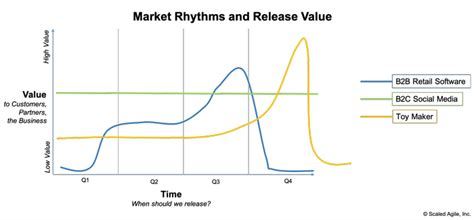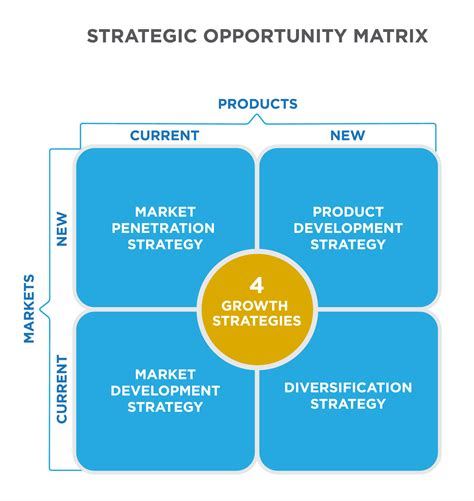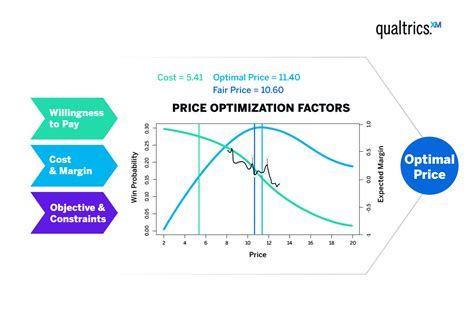- Understanding Market Rhythms in Product Management
- Incorporating Seasonality Trends in Product Development Strategies
- Utilizing Consumer Needs-Based Product Launches
- Identifying and Responding to Changing Market Demands
- Creating Effective Product Roadmaps that Align with Market Rhythms
- Understanding Market Rhythms
- Identifying Market Opportunities and Gaps
- Scheduling Product Releases
- Optimizing Product Pricing
- Anticipating Market Disruptions
Understanding Market Rhythms in Product Management
Product management is the process of overseeing the development of a product from start to finish, ensuring it remains competitive in its market and meets the needs of its customers. To do this effectively, product managers must be aware of market rhythms which are the patterns and trends that affect consumer demand, sales, and market growth. Understanding market rhythms helps product managers make informed decisions about the development, pricing, and positioning of their products.
In today’s ever-changing market, product managers need to have an in-depth understanding of market rhythms and how they influence consumer behavior. Here are the three most critical rhythms that any product manager should understand:
1. The Product Life Cycle
The Product Life Cycle describes the stages a product goes through from its introduction to the market to its eventual decline. The stages are introduction, growth, maturity, and decline. Each stage has different challenges, goals, and opportunities for the product manager to explore.
During the introduction stage, the product may have low sales and requires a lot of marketing to increase awareness and adoption. The product manager’s focus is on establishing the product and building its market share. During the growth phase, demand for the product increases, and competition increases. The goal here is to maintain market share and consider product extensions while minimizing costs and keeping up with demand. The maturity stage is where sales growth typically slows, and products may become commoditized. The product manager’s strategy will be to prolong the product’s life by making small improvements and building customer loyalty and awareness. Finally, in the decline phase, sales decline, and the product becomes obsolete. The product manager may choose to discontinue the product and offer alternatives.
Understanding the Product Life Cycle helps product managers make decisions that maximize profits and reduce risks. It helps them determine whether a product is successful or not and how long they should expect returns on their investment. By knowing where their product is in the Product Life Cycle, a product manager can adjust the product’s features, pricing, promotion, and distribution strategies to maintain consumer interest and stay ahead of the competition.
2. Seasonal Fluctuations
Seasonal fluctuations are patterns in consumer behavior that are influenced by changes in seasons or holidays. For example, winter clothing may sell more during the winter months, or there might be a peak in chocolate sales around Valentine’s Day. The product manager can use this information to make strategic decisions about inventory, promotions, and pricing.
Understanding seasonal fluctuations requires gathering data from previous years and analyzing it to identify patterns and trends. With this information, the product manager can adjust their marketing strategy, stock availability, and pricing to meet consumer demand, maximize sales, and minimize waste. By utilizing the data, the product manager can also identify opportunities to introduce new products or promotions aligned with seasonal events.
3. Industry Trends
Industry trends refer to the changes that happen in the industry as a whole, such as technological advancements, economic shifts, and cultural changes. Product managers need to stay up-to-date on these trends because consumers’ preferences and behaviors are constantly changing and have a significant impact on product development, sales, and market share.
Industry trends can be monitored through various resources and data sources such as blogs, industry reports, market research, and competitor analysis. By keeping an eye on emerging trends, a product manager can anticipate and prepare for changes that might impact their product’s success, such as changing consumer preferences, new competitors, or advancements in technology. For example, a food product manager may find veganism is a growing trend and may adjust their product to meet the demand for vegan options.
Understanding Market Rhythms is essential for Product Managers to make strategic and informed decisions. By keeping a close eye on Product Life Cycles, Seasonal Fluctuations, and Industry Trends, product managers can stay ahead of the competition, maximize profits, and deliver high-quality products that meet the evolving needs of their customers.
Incorporating Seasonality Trends in Product Development Strategies
Product development can be a challenging and complex process, requiring careful consideration of market trends and consumer needs. One factor that can significantly impact your product development process is seasonality trends. Understanding how seasonal demand affects your industry and consumer behavior can help you optimize your product development strategies and achieve greater success. In this article, we explore the importance of incorporating seasonality trends in your product development strategies and provide some tips for how to do so effectively.
The Importance of Incorporating Seasonality Trends
Seasonality trends can have a significant impact on consumer behavior and demand within certain industries, which can ultimately affect your product development strategy. By understanding these trends, you can better anticipate consumer needs and adjust your product development plans accordingly. Additionally, leveraging seasonality trends can help you increase sales and revenue during peak demand periods, while also optimizing inventory management and reducing costs during slower periods.
Identifying Seasonal Trends
The first step in incorporating seasonality trends into your product development strategy is to identify the relevant trends for your industry. This requires analyzing historical data to identify patterns and trends in consumer purchasing behaviors and industry trends. For example, if you operate in the fashion industry, you may analyze sales data to identify which styles and colors are most popular during certain seasons. Additionally, you may analyze industry data to identify trends in overall consumer spending and economic indicators, which may also impact seasonal demand.
Adjusting Product Development Plans
Once you have identified relevant seasonality trends, you can adjust your product development plans to align with consumer demand. This may involve modifying existing products to better meet seasonal needs, developing new products specifically designed for seasonal demand, or adjusting your launch schedule to align with peak demand periods.
For example, if you operate in the retail industry, you may adjust your product development plans to include seasonal promotions, such as holiday sales or back-to-school specials. Additionally, you may develop new product lines specifically designed for seasonal demand, such as winter clothing or summer accessories. By doing so, you can better meet consumer needs and optimize sales and revenue during peak demand periods.
Optimizing Inventory Management
Leveraging seasonality trends can also help you optimize inventory management and reduce costs. By anticipating seasonal demand and adjusting your product development plans accordingly, you can better manage inventory and reduce the risk of overstocking or understocking. Additionally, you may adjust pricing or implement promotional strategies to help move inventory during slower periods and prevent excess inventory buildup.
Conclusion
By incorporating seasonality trends into your product development strategy, you can better anticipate consumer needs, optimize sales and revenue, and reduce costs. To effectively leverage seasonality trends, it is important to identify relevant trends for your industry, adjust product development plans accordingly, and optimize inventory management. By doing so, you can achieve greater success in the marketplace and better meet the needs of your customers.
Utilizing Consumer Needs-Based Product Launches
Product management plays a crucial role in the success of a company. To stay ahead of the competition, it is important to keep up with market rhythms, especially when it comes to launching new products. However, it can be risky and costly to launch products without thoroughly researching consumer needs.
The launch of a new product requires a significant investment of time and resources, so it makes sense for companies to put their best foot forward when it comes to product development. There’s nothing more discouraging than investing in a product that no one wants to buy. By understanding consumer needs, companies can create products that meet those needs and drive revenue.
Here are a few ways that product management can effectively leverage market rhythms by utilizing consumer needs:
1. Conduct Thorough Market Research
Before launching a new product, it is important to conduct thorough market research to identify the needs of the target audience. Quantitative and qualitative research can provide valuable insights into consumer behavior and preferences, which can be used to inform product development and marketing strategies.
Market research can include surveys, focus groups, and customer feedback. All of this data can help product managers gather important insights into what potential customers are looking for in a product or service. This information can guide decision-making throughout the product development process and help ensure a successful launch.
2. Develop Products That Address Unmet Needs
After conducting market research, the next step for product management is to create products that meet the needs of consumers. This involves considering what problems or pain points potential customers are experiencing and brainstorming solutions that will effectively address them.
By prioritizing customer needs during the product development process, companies can ensure that their products are more likely to succeed in the market. It’s important to remember that the most successful products are those that are designed with the end-user in mind.
3. Launch Products at the Right Time
Timing is key when it comes to product launches. Launching a product too early or too late can be detrimental to its success. As such, it’s important for product managers to stay up-to-date on market rhythms, consumer behavior, and industry trends to identify the optimal launch window.
For example, a new summer clothing line should be launched in the spring, just before the warm weather hits. Consumers will be looking to buy summer clothes at this time, and releasing the line early will give customers plenty of time to get their new outfits before the season hits. Similarly, launching a new line of snow boots in the summer months would likely result in low sales, as consumers are not in the market for that type of product during that time of year.
Product managers should also consider the timing of their competition’s product launches. Launching a similar product at the same time as a competitor can create confusion in the market and make it more difficult to stand out.
Conclusion
Product management plays a vital role in developing and launching successful products. To effectively leverage market rhythms, product managers need to understand consumer needs, conduct thorough market research, develop products that address unmet needs, and launch them at the right time.
By keeping these strategies in mind, companies can improve their chances of launching products that meet the needs of their customers and achieve greater success in the marketplace.
Identifying and Responding to Changing Market Demands
Product management is a crucial function in any business, dealing with the entire lifecycle of a product from conception to delivery. One of the biggest challenges in this role is to keep the product relevant in the market. To achieve this, it is essential for product managers to identify and respond to changing market demands. Here are four ways in which product management can leverage market rhythms to enhance the success of the product:
1. Stay up-to-date with market trends
Product managers need to be aware of the latest market trends and be able to identify which ones are relevant to their product. This knowledge will help them to stay ahead of the competition and make informed decisions about product development. To stay up-to-date with market trends, product managers can attend industry conferences, join relevant social media groups, and monitor industry news sources.
2. Conduct regular market research
Regular market research is crucial for identifying changing market demands. Product managers need to understand the needs of their target market and keep an eye on evolving trends. This information can be used to make informed decisions about product development and ensure that the product remains relevant. Product managers can conduct market research through focus groups, surveys, and customer feedback forms.
3. Create a product roadmap
A product roadmap is a high-level plan that outlines the goals and objectives of a product over a specified period. It helps product managers to visualize where the product is heading and how it will evolve. This roadmap can be updated regularly to reflect changing market demands and ensure that the product is aligned with the company’s goals. A well-crafted product roadmap can also help to communicate the product vision to stakeholders.
4. Be agile in product development
Agile product development is a methodology that involves regular testing and feedback to ensure that the product meets customer needs. This method allows product managers to respond quickly to changing market demands and make adjustments to the product as necessary. By being agile in product development, product managers can reduce the time it takes to deliver a product to market and ensure that it remains relevant throughout its lifecycle.
In conclusion, identifying and responding to changing market demands is critical to the success of any product. Product managers need to stay up-to-date with market trends, conduct regular market research, create a product roadmap, and be agile in product development. By leveraging market rhythms, product managers can ensure that their product remains relevant and adaptable to changing market demands.
Creating Effective Product Roadmaps that Align with Market Rhythms
One of the most important responsibilities of a product manager is to create and manage a product roadmap. A product roadmap is essentially a plan that outlines the direction of a product over a certain period of time. It allows product managers to visualize their product’s growth and development over time, in order to achieve their business goals. To be effective, a product roadmap must take into consideration market rhythms, which are the natural ebbs and flows of the market that affect consumer behavior, product demand, and buyer preferences. Below are the five ways product management can leverage market rhythms to create effective product roadmaps.
Understanding Market Rhythms

The first step in leveraging market rhythms to create effective product roadmaps is to understand them. Market rhythms refer to the regular patterns of change in consumer behavior, product demand, and buyer preferences in response to various external factors. These factors can be economic, social, political, and technological, among others. For example, seasonal changes, economic downturns, and technological advancements are all factors that can affect market rhythms. As such, product managers need to do their research and keep a close eye on market trends and indicators in order to identify these patterns and make informed decisions about their product’s roadmap.
Identifying Market Opportunities and Gaps

One of the key benefits of understanding market rhythms is the ability to identify market opportunities and gaps. By keeping a close eye on market trends and indicators, product managers can identify areas of the market that are underserved or where demand is increasing. This information can then be used to create roadmaps that focus on developing products that address these opportunities or gaps. By doing so, product managers can give their products a competitive advantage and gain a larger share of the market.
Scheduling Product Releases

Another way product management can leverage market rhythms is by scheduling product releases. By aligning product releases with market rhythms, product managers can capitalize on consumer behavior and demand patterns. For example, scheduling a product release before the start of a busy holiday shopping season can help a product gain traction and generate strong sales. Additionally, by avoiding product releases during periods of low demand, product managers can minimize the risk of poor sales performance.
Optimizing Product Pricing

Market rhythms can also be leveraged to optimize product pricing. By understanding market rhythms, product managers can identify the optimal times to adjust product prices. For example, during periods of high demand, product managers can increase prices to maximize profits. Conversely, during periods of low demand, product managers can lower prices to stimulate demand and attract buyers.
Anticipating Market Disruptions

Finally, by understanding market rhythms, product managers can anticipate market disruptions and prepare for them accordingly. Disruptions, such as economic downturns or technological advancements, can significantly impact product demand and consumer behavior. By anticipating these disruptions, product managers can adjust their product roadmaps to mitigate risks and capitalize on emerging opportunities.
In conclusion, product management can leverage market rhythms to create effective product roadmaps by understanding the rhythms, identifying opportunities and gaps, scheduling product releases, optimizing product pricing, and anticipating disruptions. By doing so, product managers can stay ahead of the market curve and ensure their products remain relevant and competitive in a constantly evolving marketplace.


